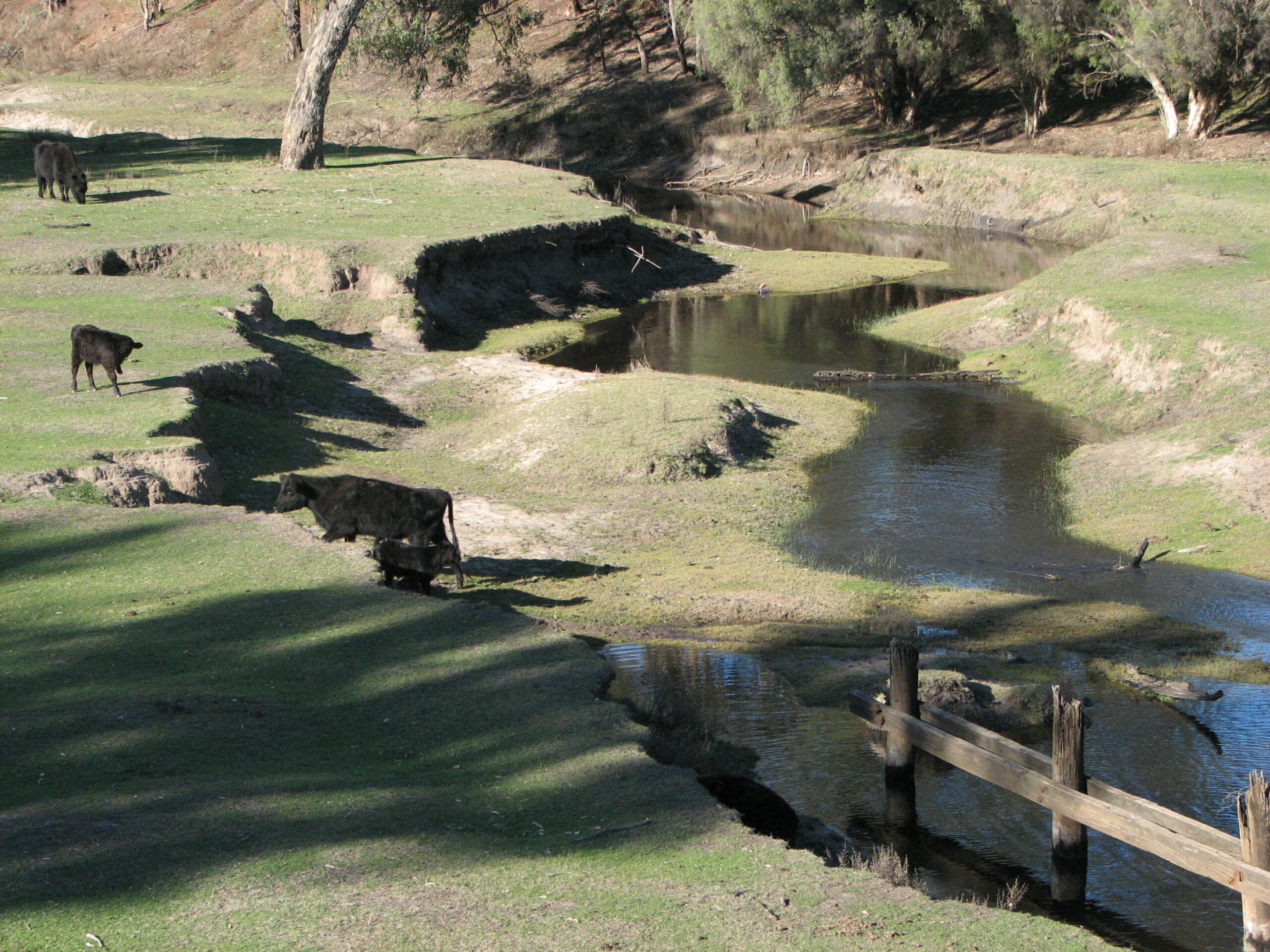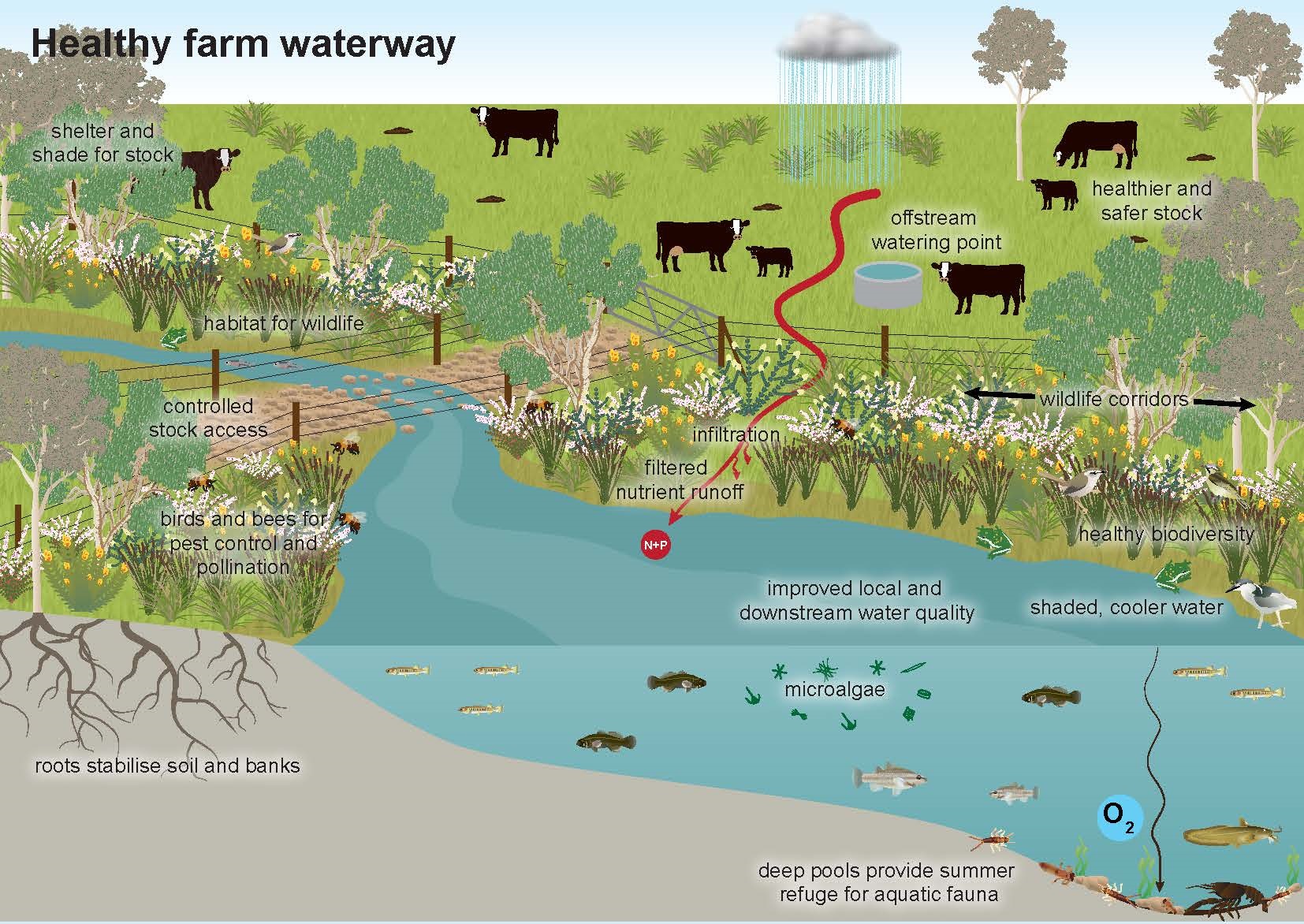Stock exclusion fencing and revegetation program
Stock that have access to waterways or drains degrade the natural environment; dung and urine can contaminate water, either directly or when it is washed into waterways after rainfall. Dung and urine contain organic matter and nutrients that promote algal growth and decrease a waterway’s ability to support a healthy ecosystem.
When stock trample banks and beds of waterways, streambank erosion and sediment runoff are increased. Hooved animals, such as sheep and cows, destroy soil structure through pugging (compaction). By eating and damaging foreshore vegetation that stabilises the banks, erosion is worsened.
When drains and streams are degraded by stock, the erosion and water quality impacts can have flow-on effects to downstream waterways and estuaries. This can adversely impact habitats for fish, birds, frogs, and marsupials. In some areas, looking after your waterway can be as simple as fencing off existing foreshore vegetation and controlling weed growth to allow natural regeneration. In most cases, planting native seedlings along waterways will help to out-compete weed growth and support a healthy ecosystem.

Why should we fence and revegetate our waterways?
Get involved
Funding is available through partnerships with landowners to erect stock-exclusion fencing and/or undertake riparian revegetation and buffer planting.
The program is open to grazing farmers on both large and small properties located in one of the catchments targeted by Healthy Estuaries WA and Revitalising Geographe Waterways.
Project sites are to be situated on a natural waterway or drain with preference given to sites where fencing and revegetation are both being implemented.
Landowners must contribute at least 50 per cent of the cost of the project through either cash or in-kind contributions for example, installation of fencing or completion of revegetation.
The program is coordinated by the Department of Water and Environmental Regulation with officers from local catchment groups providing support to landowners on-the-ground.
Enquiries can be submitted at any time by contacting your regional catchment group:



